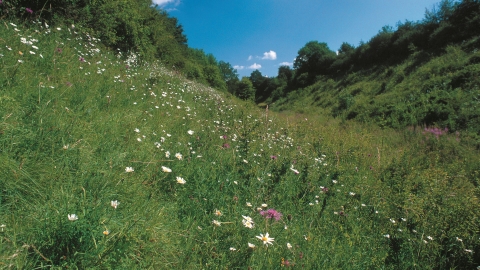Please note: the woodland is suffering from ash dieback. Access has been closed to ensure visitor safety. The southern, grassland section is still open and accessible from Cow Lane.

Jim Asher
Hook Norton Cutting
Location
Know before you go
Dogs
When to visit
Opening times
Open at all timesBest time to visit
January to AugustAbout the reserve
Railway past
This former Great Western Railway track was used to transport iron ore from the north Oxfordshire town of Hook Norton to the blast furnaces of the Midlands and south Wales. It is composed of two sections of line separated by an old railway tunnel (which does not belong to BBOWT and is not accessible).
Wildlife highlights
The southern section has open, sunny banks of limestone grassland studded with a galaxy of wild flowers including woolly thistle, oxeye daisy, fairy flax and wild carrot. The northern section has areas of woodland and areas of scrub. These ring out with birdsong in spring and summer. Among the many species recorded nesting here are great spotted and green woodpeckers, garden warbler, blackcap, whitethroat and goldcrest. The cutting is also notable for its populations of bees. Butterflies, including marbled white, common blue and red admiral, are numerous.
Exposed cliffs
The cutting is of special geological importance because of its exposed Jurassic oolite limestones which contain many fossils, and are stained red by the presence of iron oxide. Recently, scrub has been cleared to allow better views of these. The retaining walls along the track are a lichen and moss-spotter's dream.
